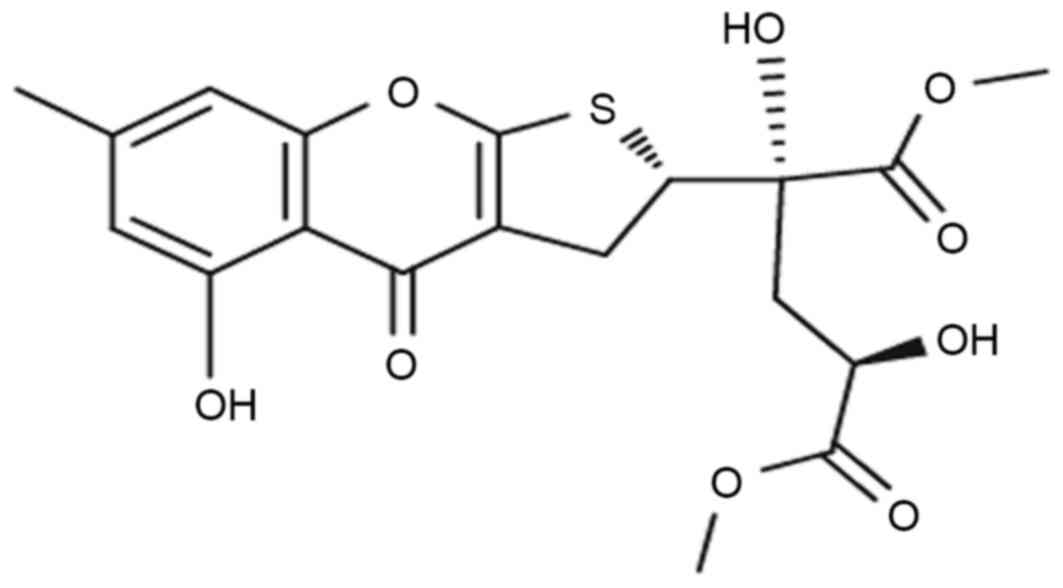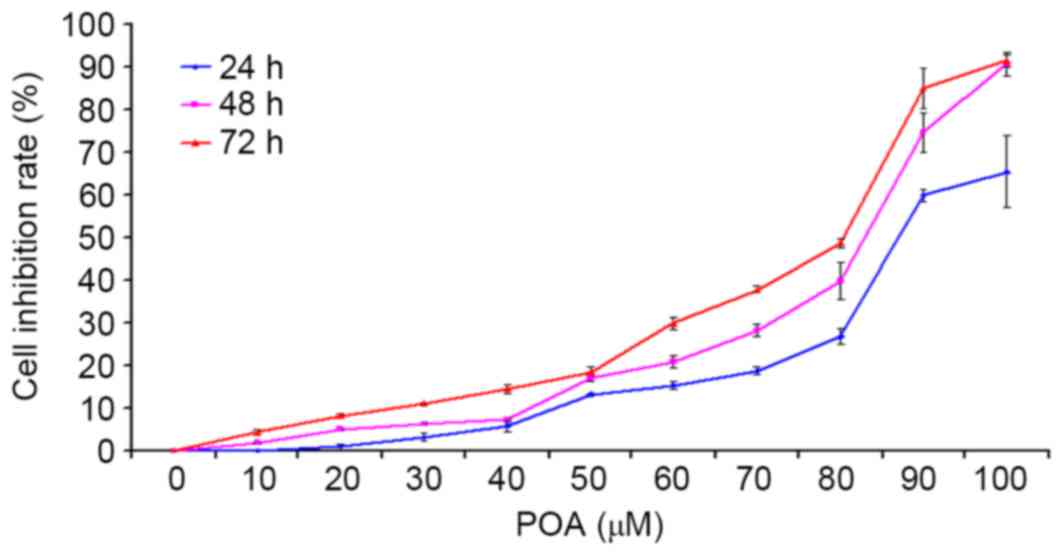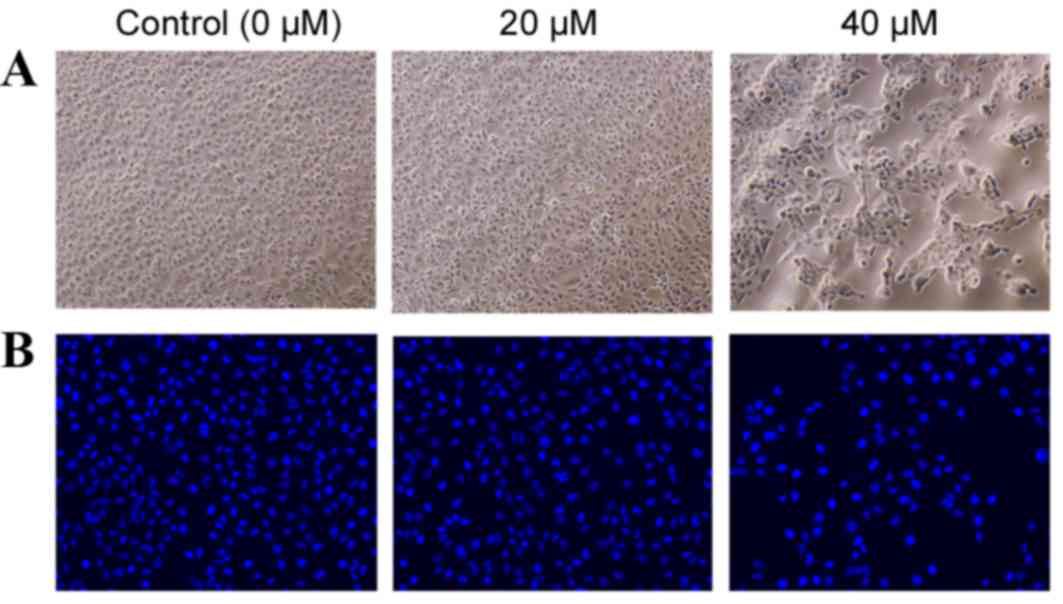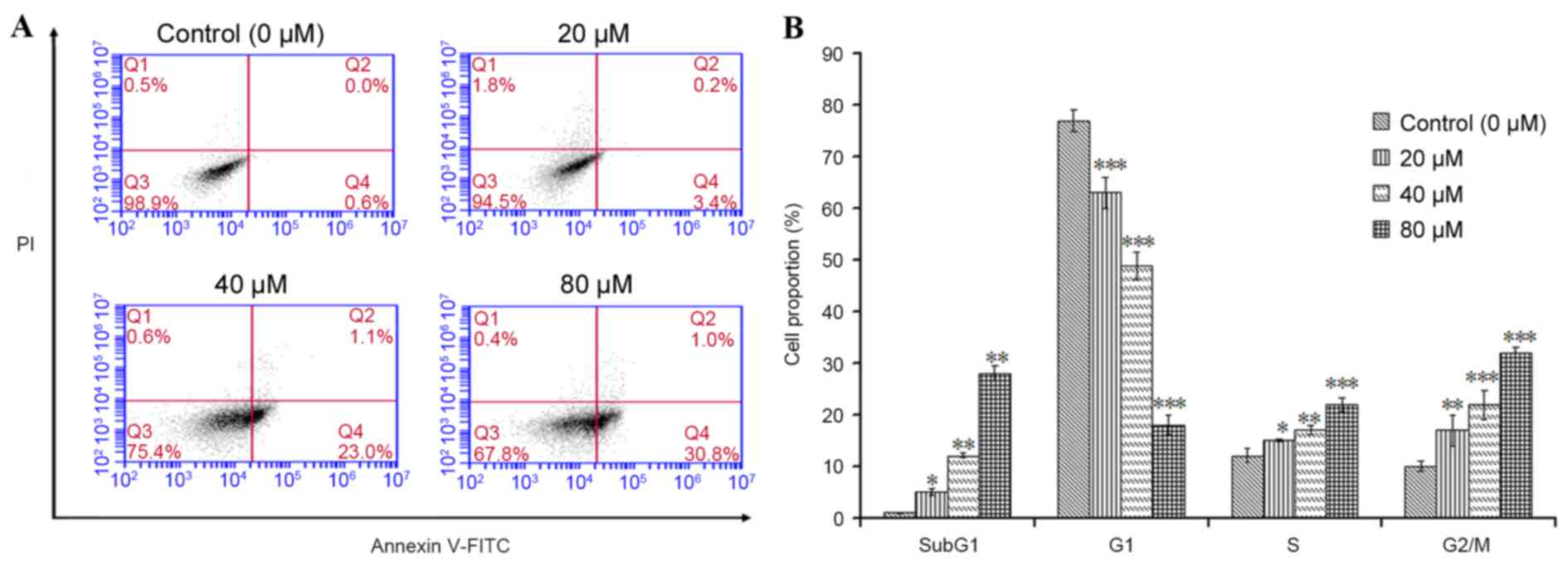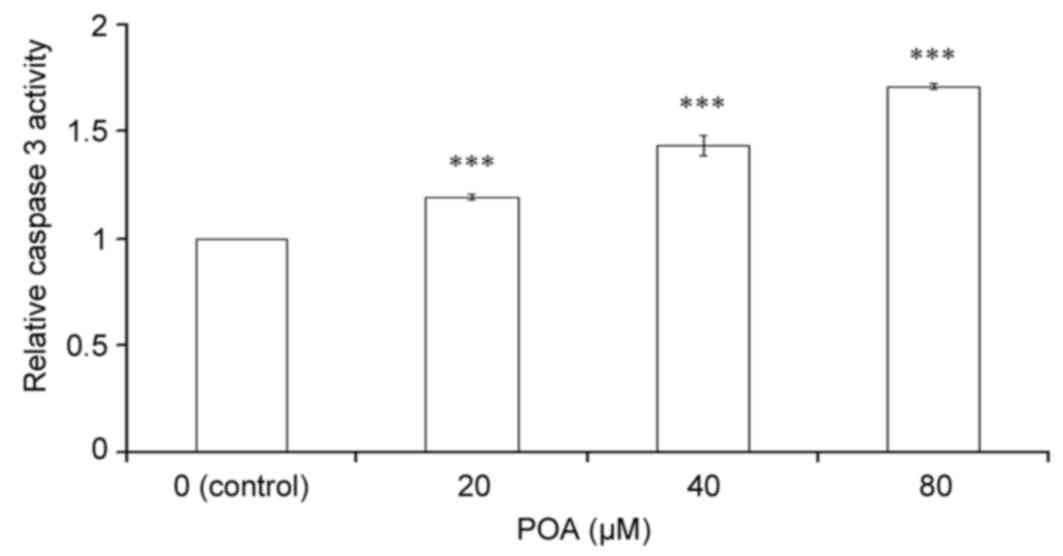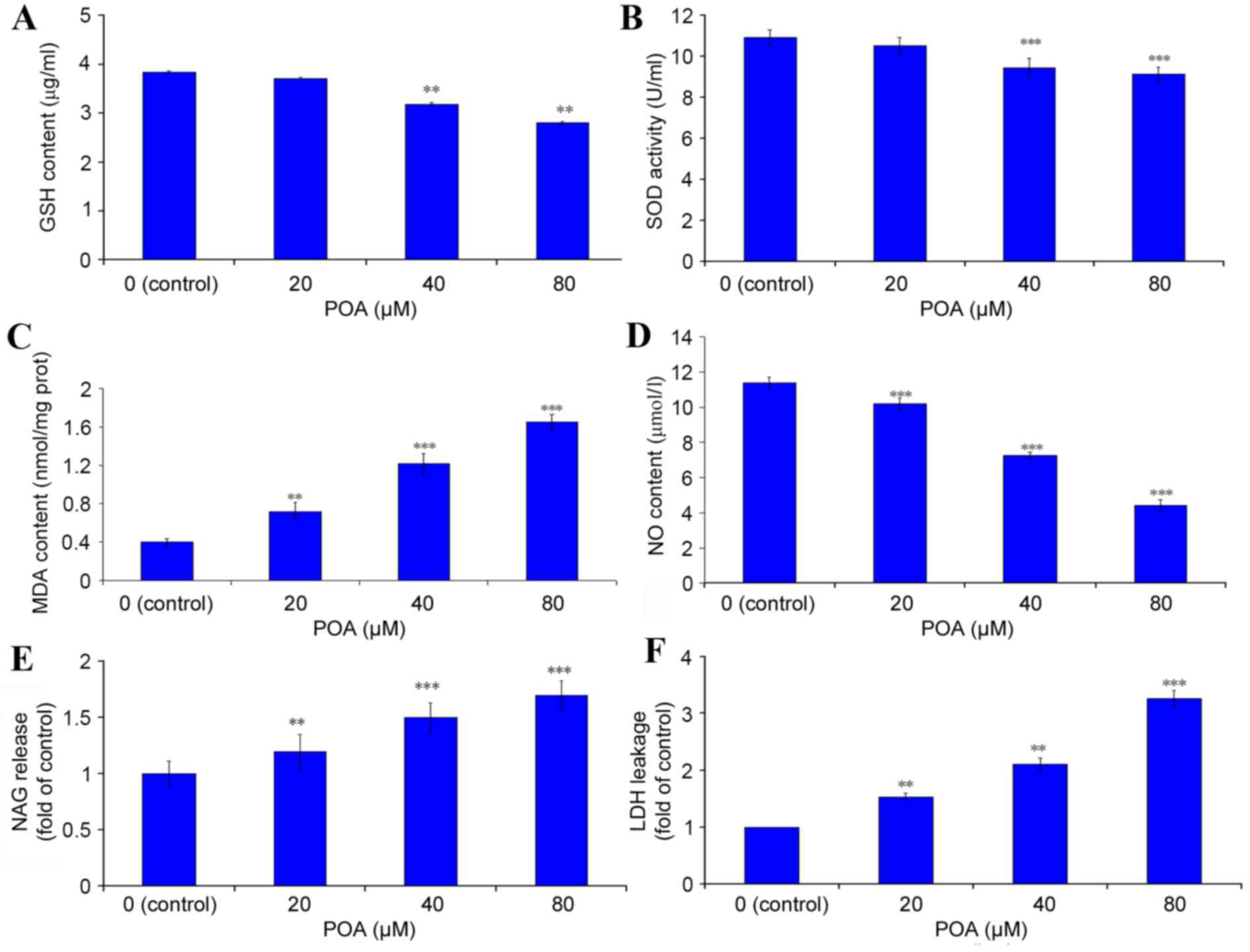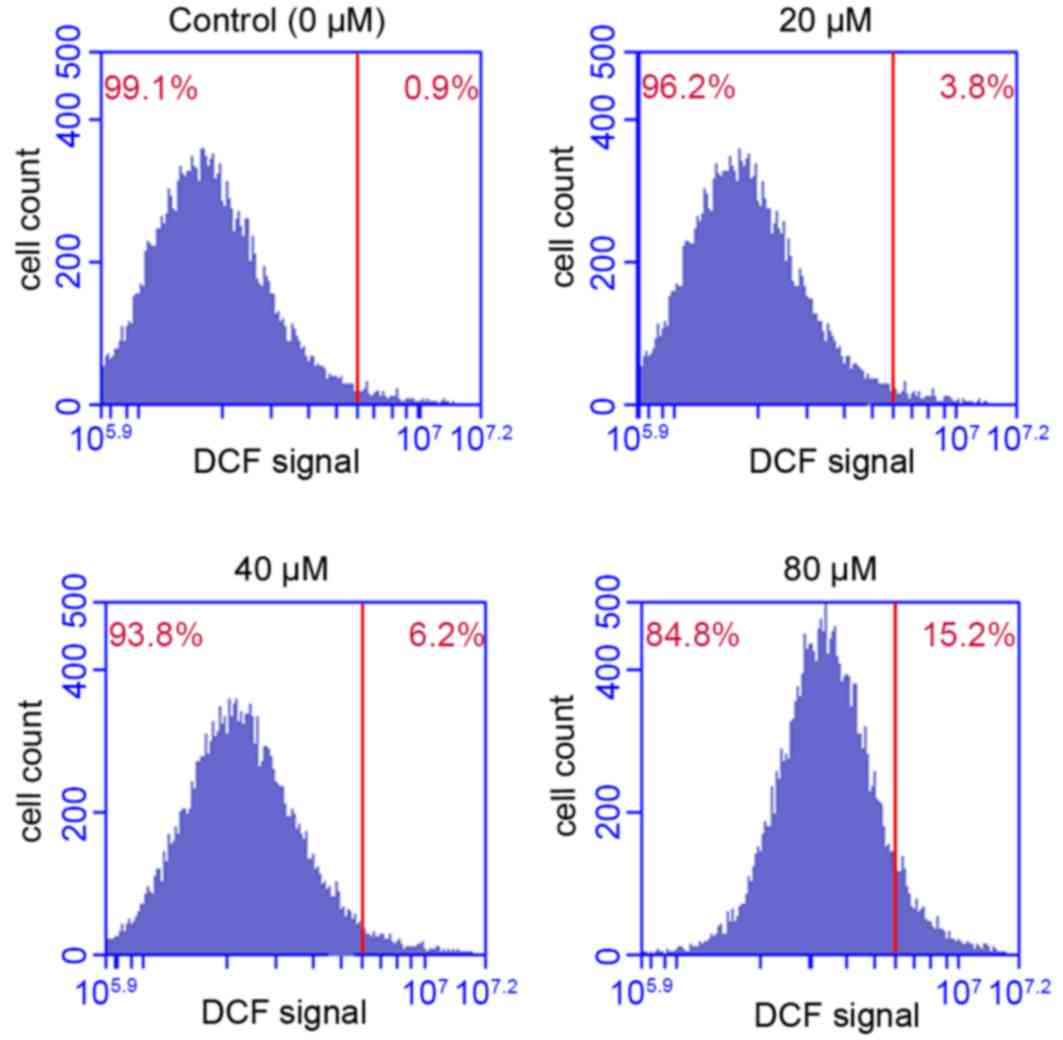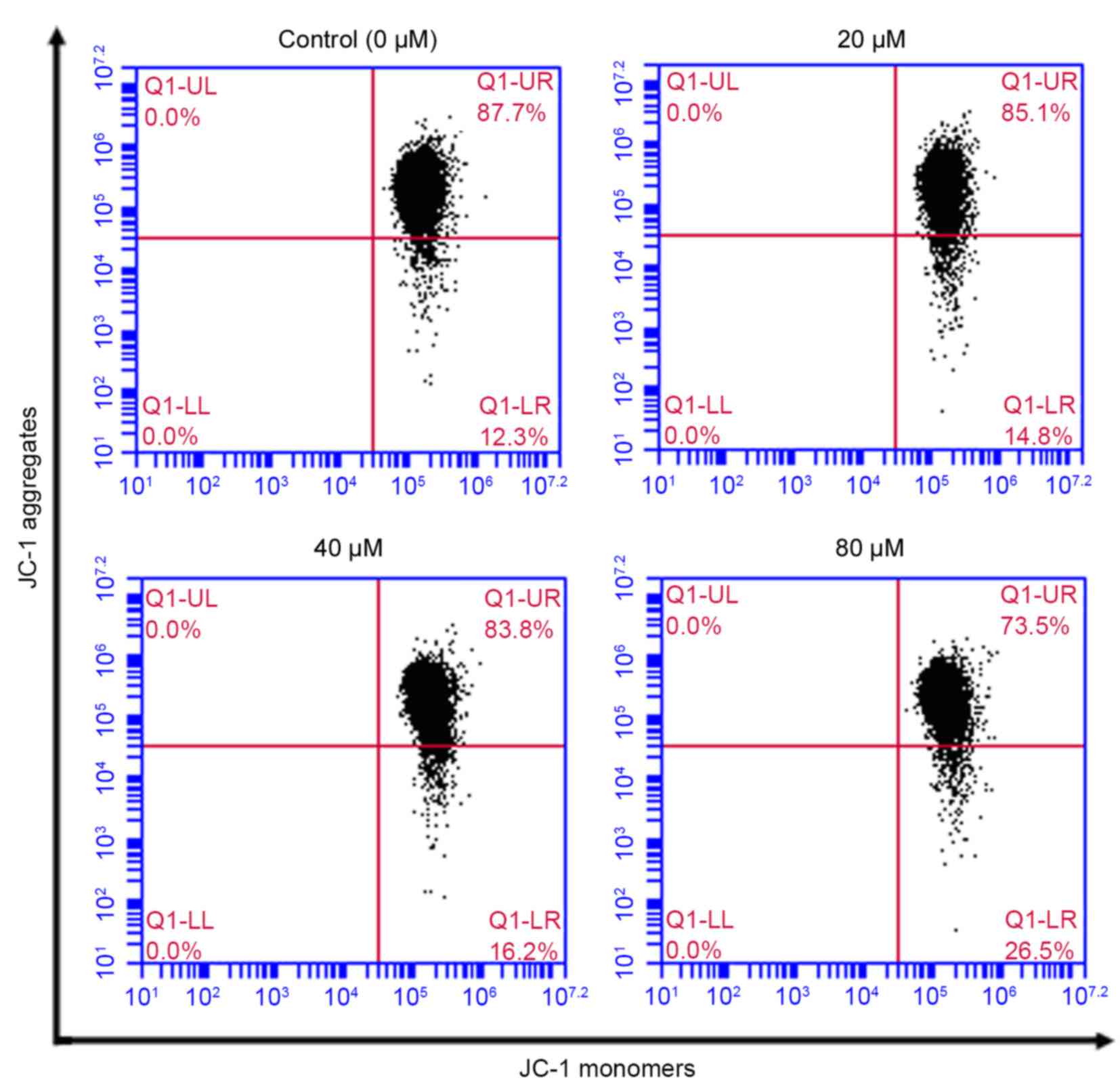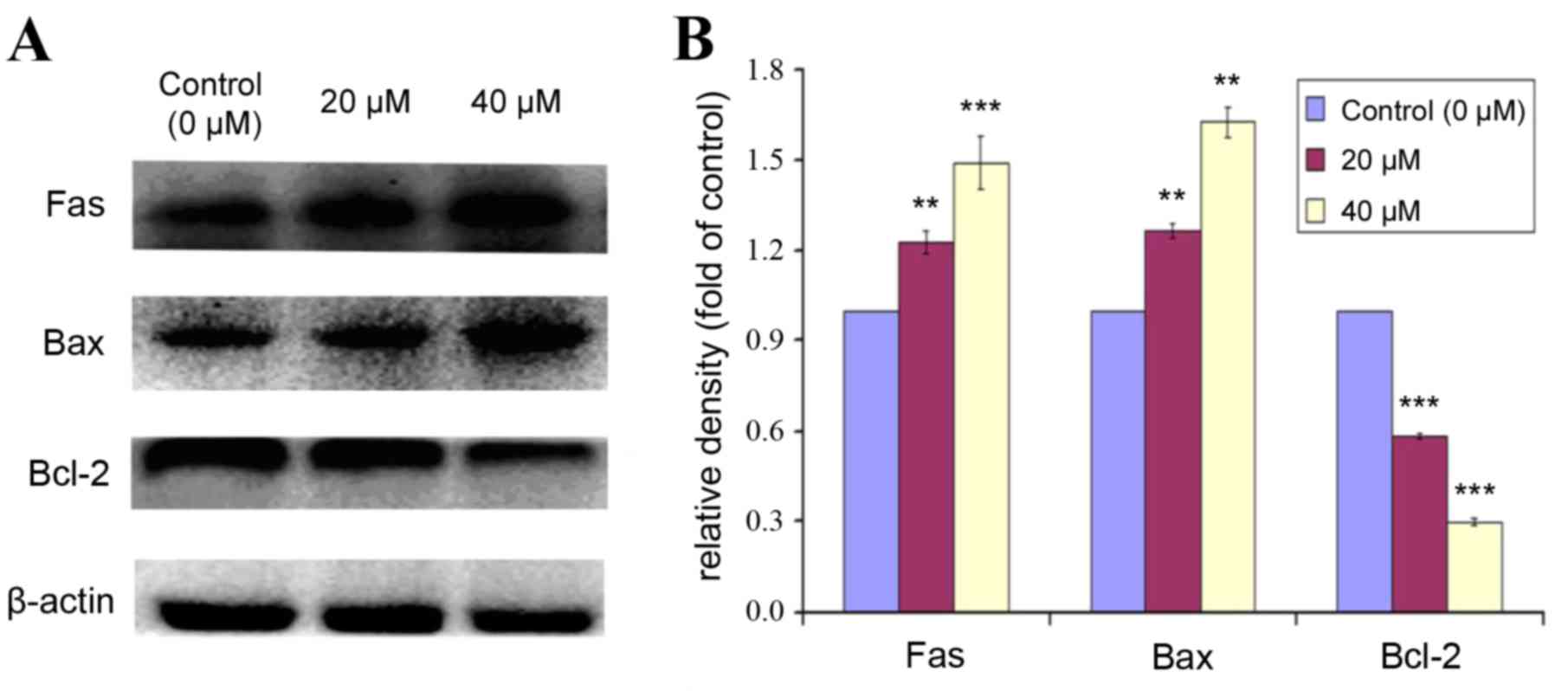|
1
|
Blunt JW, Copp BR, Keyzers RA, Munro MH
and Prinsep MR: Marine natural products. Nat Prod Rep. 29:144–222.
2012. View Article : Google Scholar : PubMed/NCBI
|
|
2
|
Qi SH: Bioactive compounds from marine
gorgonian coralsStudies In Natural Products Chemistry. Rahman A:
38. 1st. Elsevier; Oxford: pp. 325–352. 2012, View Article : Google Scholar
|
|
3
|
Zhang XY, Bao J, Wang GH, He F, Xu XY and
Qi SH: Diversity and antimicrobial activity of culturable fungi
isolated from six species of the South China Sea gorgonians. Microb
Ecol. 64:617–627. 2012. View Article : Google Scholar : PubMed/NCBI
|
|
4
|
Sun YL, He F, Liu KS, Zhang XY, Bao J,
Wang YF, Nong HX, Xu XY and Qi SH: Cytotoxic
dihydrothiophene-condensed chromones from marine-derived fungus
Penicillium oxalicum. Planta Med. 78:1957–1961. 2012. View Article : Google Scholar : PubMed/NCBI
|
|
5
|
Sun YL, Bao J, Liu KS, Zhang XY, He F,
Wang YF, Nong XH and Qi SH: Cytotoxic dihydrothiophene-condensed
chromones from the marine-derived fungus Penicillium oxalicum.
Planta Med. 79:1474–1479. 2013. View Article : Google Scholar : PubMed/NCBI
|
|
6
|
Wu Y, Connors D, Barber L, Jayachandra S,
Hanumegowda UM and Adams SP: Multiplexed assay panel of
cytotoxicity in HK-2 cells for detection of renal proximal tubule
injury potential of compounds. Toxicol In Vitro. 23:1170–1178.
2009. View Article : Google Scholar : PubMed/NCBI
|
|
7
|
Wang J, Jia L, Kuang Z, Wu T, Hong Y, Chen
X, Leung WK, Xia J and Cheng B: The in vitro and in vivo antitumor
effects of clotrimazole on oral squamous cell carcinoma. PLoS One.
9:e988852014. View Article : Google Scholar : PubMed/NCBI
|
|
8
|
Tripathi M, Singh BK, Mishra C, Raisuddin
S and Kakkar P: Involvement of mitochondria mediated pathways in
hepatoprotection conferred by Fumaria parviflora Lam. extract
against nimesulide induced apoptosis in vitro. Toxicol In Vitro.
24:495–508. 2010. View Article : Google Scholar : PubMed/NCBI
|
|
9
|
Nigam N, George J, Srivastava S, Roy P,
Bhui K, Singh M and Shukla Y: Induction of apoptosis by
(6)-gingerol associated with the modulation of p53 and involvement
of mitochondrial signaling pathway in B(a)P-induced mouse skin
tumorigenesis. Cancer Chemother Pharmacol. 65:687–696. 2010.
View Article : Google Scholar : PubMed/NCBI
|
|
10
|
Terada Y, Inoshita S, Hanada S, Shimamura
H, Kuwahara M, Ogawa W, Kasuga M, Sasaki S and Marumo F:
Hyperosmolality activates Akt and regulates apoptosis in renal
tubular cells. Kidney Int. 60:553–567. 2001. View Article : Google Scholar : PubMed/NCBI
|
|
11
|
Zhang JQ, Shen M, Zhu CC, Yu FX, Liu ZQ,
Ally N, Sun SC, Li K and Liu HL: 3-Nitropropionic acid induces
ovarian oxidative stress and impairs follicle in mouse. PLoS One.
9:e865892014. View Article : Google Scholar : PubMed/NCBI
|
|
12
|
Lund AK, Knuckles TL, Akata Obot C, Shohet
R, McDonald JD, Gigliotti A, Seagrave JC and Campen MJ: Gasoline
exhaust emissions induce vascular remodeling pathways involved in
atherosclerosis. Toxicol Sci. 95:485–494. 2007. View Article : Google Scholar : PubMed/NCBI
|
|
13
|
Zhu CP, Hu W, Wu H and Hu X: No evident
dose-response relationship between cellular ROS level and its
cytotoxicity-a paradoxical issue in ROS-based cancer therapy. Sci
Rep. 4:50292014.PubMed/NCBI
|
|
14
|
Yuste JE, Tarragon E, Campuzano CM and
RosBernal F: Implications of glial nitric oxide in
neurodegenerative diseases. Front Cell Neurosci. 9:3222015.
View Article : Google Scholar : PubMed/NCBI
|
|
15
|
Chiu JS: Models used to assess renal
function. Drug Dev Res. 32:247–255. 1994. View Article : Google Scholar
|
|
16
|
Ali RJ, Al-Obaidi FH and Arif HS: The role
of urinary N-acetyl Beta-D-glucosaminidase in children with
urological problems. Oman Med J. 29:285–288. 2014. View Article : Google Scholar : PubMed/NCBI
|
|
17
|
Prasad NR, Menon VP, Vasudev V and
Pugalendi KV: Radioprotective effect of sesamol on gamma-radiation
induced DNA damage, lipid peroxidation and antioxidants levels in
cultured human lymphocytes. Toxicology. 209:225–235. 2005.
View Article : Google Scholar : PubMed/NCBI
|
|
18
|
Sharikabad MN, Ostbye KM, Lyberg T and
Brørs O: Effect of extracellular Mg(2+) on ROS and Ca(2+)
accumulation during reoxygenation of rat cardiomyocytes. Am J
Physiol Heart Circ Physiol. 280:H344–H353. 2001.PubMed/NCBI
|
|
19
|
Cossarizza A, Baccarani-Contri M,
Kalashnikova G and Franceschi C: A new method for the
cytofluorimetric analysis of mitochondrial membrane potential using
the J-aggregate forming lipophilic cation
5,5′,6,6′-tetrachloro-1,1′,3,3′-tetraethylbenzimidazolcarbocyanine
iodide (JC-1). Biochem Biophys Res Commun. 197:40–45. 1993.
View Article : Google Scholar : PubMed/NCBI
|
|
20
|
Yao J, Jiang Z, Duan W, Huang J, Zhang L,
Hu L, He L, Li F, Xiao Y, Shu B and Liu C: Involvement of
mitochondrial pathway in triptolide-induced cytotoxicity in human
normal liver L-02 cells. Biol Pharm Bull. 31:592–597. 2008.
View Article : Google Scholar : PubMed/NCBI
|
|
21
|
Fadok VA, Voelker DR, Campbell PA, Cohen
JJ, Bratton DL and Henson PM: Exposure of phosphatidylserine on the
surface of apoptotic lymphocytes triggers specific recognition and
removal by macrophages. J Immunol. 148:2207–2216. 1992.PubMed/NCBI
|
|
22
|
Zamai L, Falcieri E, Marhefka G and Vitale
M: Supravital exposure to propidium iodide identifies apoptotic
cells in the absence of nucleosomal DNA fragmentation. Cytometry.
23:303–311. 1996. View Article : Google Scholar : PubMed/NCBI
|
|
23
|
Wilson MR: Apoptotic signal transduction:
Emerging pathways. Biochem Cell Biol. 76:573–582. 1998. View Article : Google Scholar : PubMed/NCBI
|
|
24
|
Bonnes-Taourel D, Guérin MC and Torreilles
J: Is malonaldehyde a valuable indicator of lipid peroxidation.
Biochem Pharmacol. 44:985–988. 1992. View Article : Google Scholar : PubMed/NCBI
|
|
25
|
Yamashita T, Doi K, Hamasaki Y, Matsubara
T, Ishii T, Yahagi N, Nangaku M and Noiri E: Evaluation of urinary
tissue inhibitor of metalloproteinase-2 in acute kidney injury: A
prospective observational study. Crit Care. 18:7162014. View Article : Google Scholar : PubMed/NCBI
|
|
26
|
Sinha K, Das J, Pal PB and Sil PC:
Oxidative stress: The mitochondria-dependent
andmitochondria-independent pathways of apoptosis. Arch Toxicol.
87:1157–1180. 2013. View Article : Google Scholar : PubMed/NCBI
|
|
27
|
Ly JD, Grubb DR and Lawen A: The
mitochondrial membrane potential (deltapsi (m)) in apoptosis; an
update. Apoptosis. 8:115–128. 2003. View Article : Google Scholar : PubMed/NCBI
|
|
28
|
Jacobson MD, Weil M and Raff MC:
Programmed cell death in the animal development. Cell. 88:347–354.
1997. View Article : Google Scholar : PubMed/NCBI
|
|
29
|
Scaffidi C, Kirchhoff S, Krammer PH and
Peter ME: Apoptosis signaling in lymphocytes. Curr Opin Immunol.
11:277–285. 1999. View Article : Google Scholar : PubMed/NCBI
|
|
30
|
Pirocanac EC, Nassirpour R, Yang M, Wang
J, Nardin SR, Gu J, Fang B, Moossa AR, Hoffman RM and Bouvet M:
Bax-induction gene therapy of pancreatic cancer. J Surg Res.
106:346–351. 2002. View Article : Google Scholar : PubMed/NCBI
|
|
31
|
Waring P and Müllbacher A: Cell death
induced by the Fas/Fas ligand pathway and its role in pathology.
Immunol Cell Biol. 77:312–317. 1999. View Article : Google Scholar : PubMed/NCBI
|
|
32
|
Certo M, Del Gaizo Moore V, Nishino M, Wei
G, Korsmeyer S, Armstrong SA and Letai A: Mitochondria primed by
death signals determine cellular addiction to antiapoptotic BCL-2
family members. Cancer Cell. 9:351–365. 2006. View Article : Google Scholar : PubMed/NCBI
|
|
33
|
Nakazawa Y, Kamijo T, Koike K and Noda T:
ARF tumor suppressor induces mitochondria-dependent apoptosis by
modulation of mitochondrial Bcl-2 family proteins. J Biol Chem.
278:27888–27895. 2003. View Article : Google Scholar : PubMed/NCBI
|
|
34
|
Antonsson B, Conti F, Ciavatta A,
Montessuit S, Lewis S, Martinou I, Bernasconi L, Bernard A, Mermod
JJ, Mazzei G, et al: Inhibition of Bax channel- forming activity by
Bcl-2. Science. 277:370–372. 1997. View Article : Google Scholar : PubMed/NCBI
|
|
35
|
Borner C: The Bcl-2 protein family:
Sensors and checkpoints for life-or-death decisions. Mol Immunol.
39:615–647. 2003. View Article : Google Scholar : PubMed/NCBI
|
|
36
|
Lanave C, Santamaria M and Saccone C:
Comparative genomics: The evolutionary history of the Bcl-2 family.
Gene. 333:71–79. 2004. View Article : Google Scholar : PubMed/NCBI
|
|
37
|
Zorov DB, Juhaszova M and Sollott SJ:
Mitochondrial reactive oxygen species (ROS) and ROS-induced ROS
release. Physiol Rev. 94:909–950. 2014. View Article : Google Scholar : PubMed/NCBI
|
|
38
|
Urra FA, Cordova-Delgado M, Pessoa-Mahana
H, Ramírez-Rodriguez O, Weiss-Lopez B, Ferreira J and
Araya-Maturana R: Mitochondria: A promising target for anticancer
alkaloids. Curr Top Med Chem. 13:2171–2183. 2013. View Article : Google Scholar : PubMed/NCBI
|
|
39
|
Rosas HD, Doros G, Bhasin S, Thomas B,
Gevorkian S, Malarick K, Matson W and Hersch SM: A systems-level
‘misunderstanding’: The plasma metabolome in Huntington's disease.
Ann Clin Transl Neurol. 2:756–768. 2015. View Article : Google Scholar : PubMed/NCBI
|
|
40
|
Brzović-Šarić V, Landeka I, Šarić B,
Barberić M, Andrijašević L, Cerovski B, Oršolić N and Đikić D:
Levels of selected oxidative stress markers in the vitreous and
serum of diabetic retinopathy patients. Mol Vis. 21:649–664.
2015.PubMed/NCBI
|
|
41
|
Schmitt B, Vicenzi M, Garrel C and Denis
FM: Effects of N-acetylcysteine, oral glutathione (GSH) and a novel
sublingual form of GSH on oxidative stress markers: A comparative
crossover study. Redox Biol. 6:198–205. 2015. View Article : Google Scholar : PubMed/NCBI
|
|
42
|
Valko M, Jomova K, Rhodes CJ, Kuca K and
Musílek K: Redox- and non-redox-metal-induced formation of free
radicals and their role in human disease. Arch Toxicol. 90:1–37.
2016. View Article : Google Scholar : PubMed/NCBI
|
|
43
|
Dubner D, Gisone P, Jaitovich I and Perez
M: Free radicals production and estimation of oxidative stress
related to gamma irradiation. Biol Trace Elem Res. 47:265–270.
1995. View Article : Google Scholar : PubMed/NCBI
|
|
44
|
Förstermann U and Sessa WC: Nitric oxide
synthases: Regulation and function. Eur Heart J. 33:829–837. 2012.
View Article : Google Scholar : PubMed/NCBI
|
|
45
|
Xie H, Valera VA, Merino MJ, Amato AM,
Signoretti S, Linehan WM, Sukhatme VP and Seth P: LDH-A Inhibition,
a therapeutic strategy for treatment of hereditary leiomyomatosis
and renal cell cancer (HLRCC). Mol Cancer Ther. 8:626–635. 2009.
View Article : Google Scholar : PubMed/NCBI
|
|
46
|
Laina A and Schwartz D: Renal tubular and
molecular events in acute renal failure. Nephron. 68:413–418.
1994.PubMed/NCBI
|
|
47
|
Jongman RM, van Klarenbosch J, Molema G,
Zijlstra JG, de Vries AJ and van Meurs M: Angiopoietin/Tie2
dysbalance is associated with acute kidney injury after cardiac
surgery assisted by cardiopulmonary bypass. PLoS One.
10:e01362052015. View Article : Google Scholar : PubMed/NCBI
|



